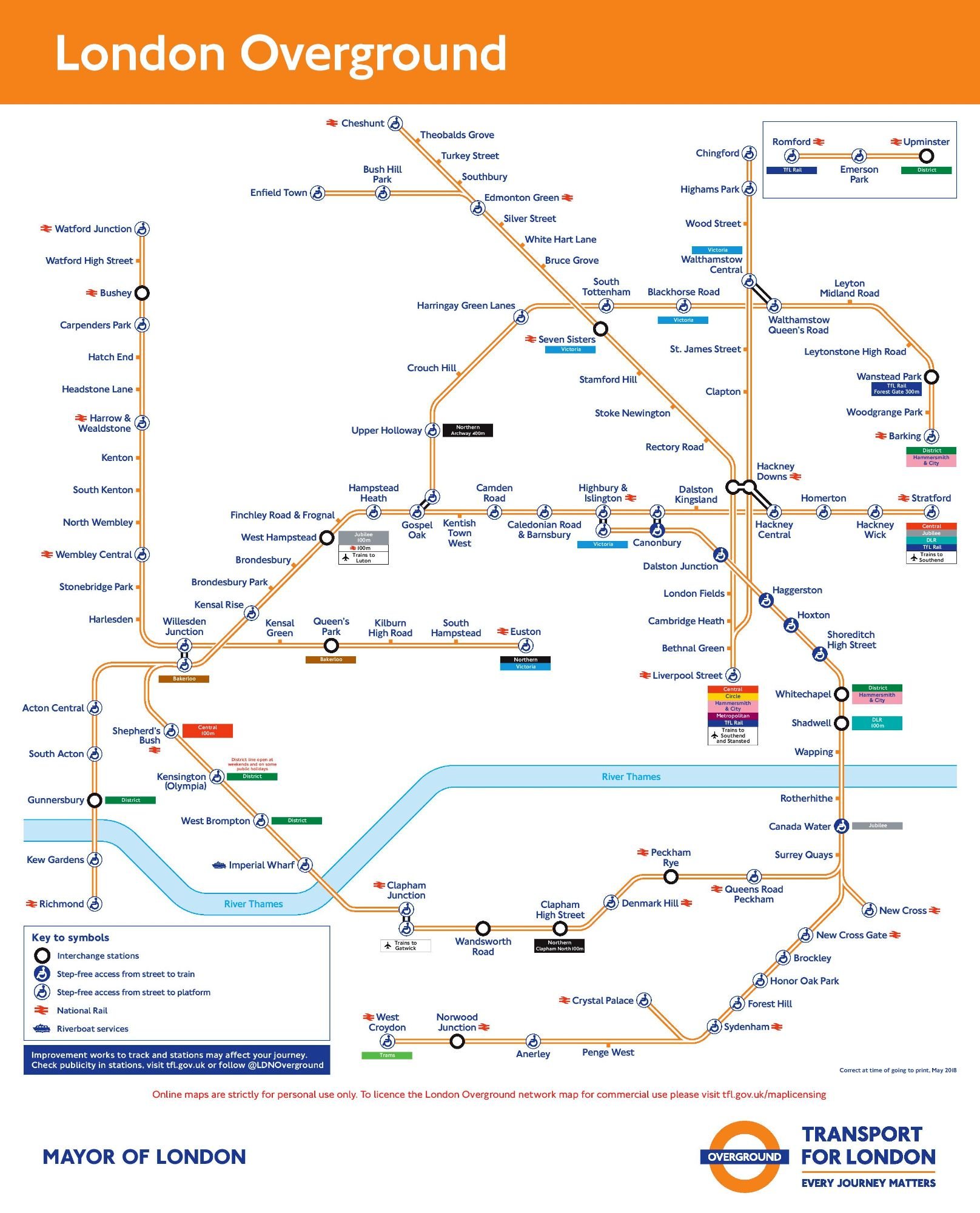
Overview
London Overground is a major commuter rail network operating across the capital and surrounding areas, providing vital orbital and suburban connections within Greater London. Managed by Transport for London (TfL) and operated under concession by Arriva Rail London, the franchise began in 2007 and has grown into one of the most successful examples of urban rail modernisation in the UK. The network connects key districts such as Stratford, Clapham Junction, Richmond, Watford, Gospel Oak, and Highbury & Islington, offering frequent, high-capacity services that integrate seamlessly with the wider London transport system.
History
London Overground was established in November 2007 when TfL took control of the former Silverlink Metro routes, introducing a new unified network with higher service standards and consistent branding. The orange roundel identity, new trains, and enhanced station management helped transform previously neglected commuter lines into a reliable and well-regarded service. Over time, the network expanded with the incorporation of the East London Line in 2010 and subsequent extensions to Clapham Junction and Crystal Palace, completing an orbital rail route around much of London. The franchise has been operated by Arriva Rail London since 2016 under contract to TfL.
Network & Routes
The London Overground network spans multiple corridors across Greater London and beyond. Core routes include the North London Line between Stratford and Richmond or Clapham Junction, the East London Line between Highbury & Islington and West Croydon or Crystal Palace, and the Watford DC Line linking London Euston with Watford Junction. Other key lines include the Gospel Oak to Barking route and the Lea Valley lines serving Enfield Town, Cheshunt, and Chingford. The network is designed to provide cross-London connectivity, linking suburban communities with key Underground, Elizabeth Line, and National Rail interchanges.
Fleet & Onboard Facilities
London Overground’s fleet primarily consists of modern Class 710 Aventra and Class 378 Capitalstar electric multiple units. These trains feature open gangways, air-conditioning, passenger information systems, and spacious interiors designed for high-capacity urban travel. Accessibility is a core priority, with step-free access at many stations and dedicated spaces for wheelchairs and bicycles. The network’s orange and white livery, coupled with the distinctive TfL roundel, ensures a consistent and instantly recognisable brand presence across London’s rail system.
Travel Information
As part of the TfL network, London Overground uses integrated Oyster and contactless payment systems, allowing seamless travel across London’s public transport modes. Services operate at high frequency throughout the day, with real-time information, staffed stations, and strong emphasis on safety and reliability. Passengers benefit from easy interchanges with the Underground, DLR, and Elizabeth Line, making it one of the most interconnected suburban rail networks in the world.
Performance & Reputation
London Overground has earned a strong reputation for punctuality, safety, and customer service since its launch. Its transformation from the underperforming Silverlink Metro into a high-quality, well-maintained service is regarded as one of the major successes of TfL’s rail management strategy. Passenger satisfaction has consistently remained high, supported by ongoing investment in rolling stock, digital systems, and infrastructure. The Overground continues to play a crucial role in London’s integrated transport future, easing congestion and providing sustainable alternatives to car travel.
Did You Know?
The London Overground roundel uses the same design as the Underground but features orange to reflect its overground routes.
The network carries more than 200 million passengers annually.
The East London Line, now part of the Overground, was originally part of the London Underground until 2007.
London Overground Archived Timetables
All files listed below are in compressed format and will need to be unpacked with an archiving program, we recommend 7-Zip which is completely free and can be downloaded from here.
London Overground Network Map
Related Searches
Folded cycles are allowed at any time. Non folded cycles are restricted to some...
London Overground operate a fleet of 57 Class 387 'Capitalstar' trainsets, these....
London Overground have major depots at Willesden, New Cross Gate and Ilford.
London Overground operate an extensive fleet of Class 710 'Aventra' trains built by...
The Gospel Oak to Barking line is part of the Overground network and is served.....
London Overground used to operate a fleet of 8 Class 172 units on the Gospel....



